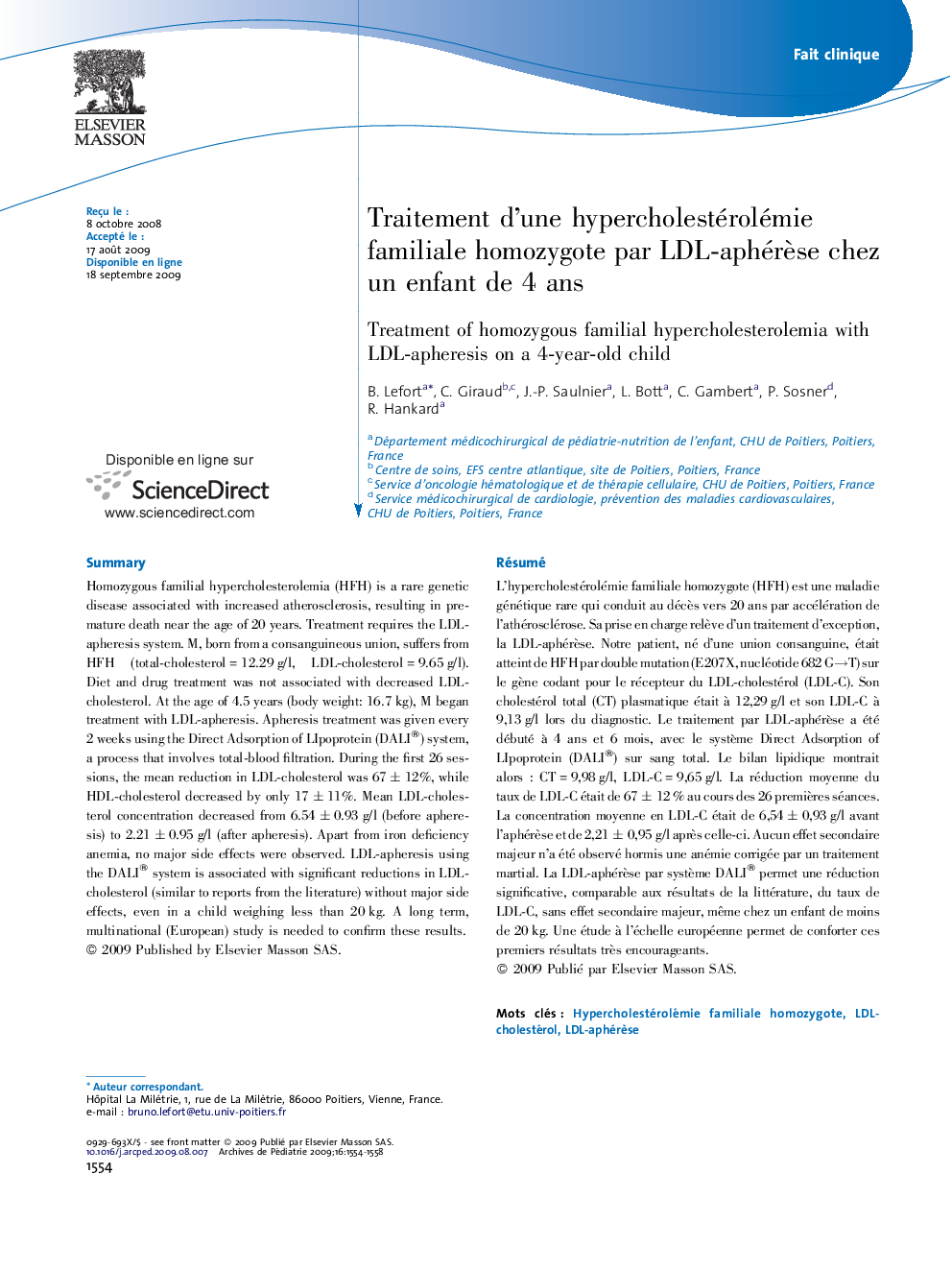| Article ID | Journal | Published Year | Pages | File Type |
|---|---|---|---|---|
| 4149128 | Archives de Pédiatrie | 2009 | 5 Pages |
RésuméL’hypercholestérolémie familiale homozygote (HFH) est une maladie génétique rare qui conduit au décès vers 20 ans par accélération de l’athérosclérose. Sa prise en charge relève d’un traitement d’exception, la LDL-aphérèse. Notre patient, né d’une union consanguine, était atteint de HFH par double mutation (E207X, nucléotide 682 G→T) sur le gène codant pour le récepteur du LDL-cholestérol (LDL-C). Son cholestérol total (CT) plasmatique était à 12,29 g/l et son LDL-C à 9,13 g/l lors du diagnostic. Le traitement par LDL-aphérèse a été débuté à 4 ans et 6 mois, avec le système Direct Adsorption of LIpoprotein (DALI®) sur sang total. Le bilan lipidique montrait alors : CT = 9,98 g/l, LDL-C = 9,65 g/l. La réduction moyenne du taux de LDL-C était de 67 ± 12 % au cours des 26 premières séances. La concentration moyenne en LDL-C était de 6,54 ± 0,93 g/l avant l’aphérèse et de 2,21 ± 0,95 g/l après celle-ci. Aucun effet secondaire majeur n’a été observé hormis une anémie corrigée par un traitement martial. La LDL-aphérèse par système DALI® permet une réduction significative, comparable aux résultats de la littérature, du taux de LDL-C, sans effet secondaire majeur, même chez un enfant de moins de 20 kg. Une étude à l’échelle européenne permet de conforter ces premiers résultats très encourageants.
SummaryHomozygous familial hypercholesterolemia (HFH) is a rare genetic disease associated with increased atherosclerosis, resulting in premature death near the age of 20 years. Treatment requires the LDL-apheresis system. M, born from a consanguineous union, suffers from HFH (total-cholesterol = 12.29 g/l, LDL-cholesterol = 9.65 g/l). Diet and drug treatment was not associated with decreased LDL-cholesterol. At the age of 4.5 years (body weight: 16.7 kg), M began treatment with LDL-apheresis. Apheresis treatment was given every 2 weeks using the Direct Adsorption of LIpoprotein (DALI®) system, a process that involves total-blood filtration. During the first 26 sessions, the mean reduction in LDL-cholesterol was 67 ± 12%, while HDL-cholesterol decreased by only 17 ± 11%. Mean LDL-cholesterol concentration decreased from 6.54 ± 0.93 g/l (before apheresis) to 2.21 ± 0.95 g/l (after apheresis). Apart from iron deficiency anemia, no major side effects were observed. LDL-apheresis using the DALI® system is associated with significant reductions in LDL-cholesterol (similar to reports from the literature) without major side effects, even in a child weighing less than 20 kg. A long term, multinational (European) study is needed to confirm these results.
